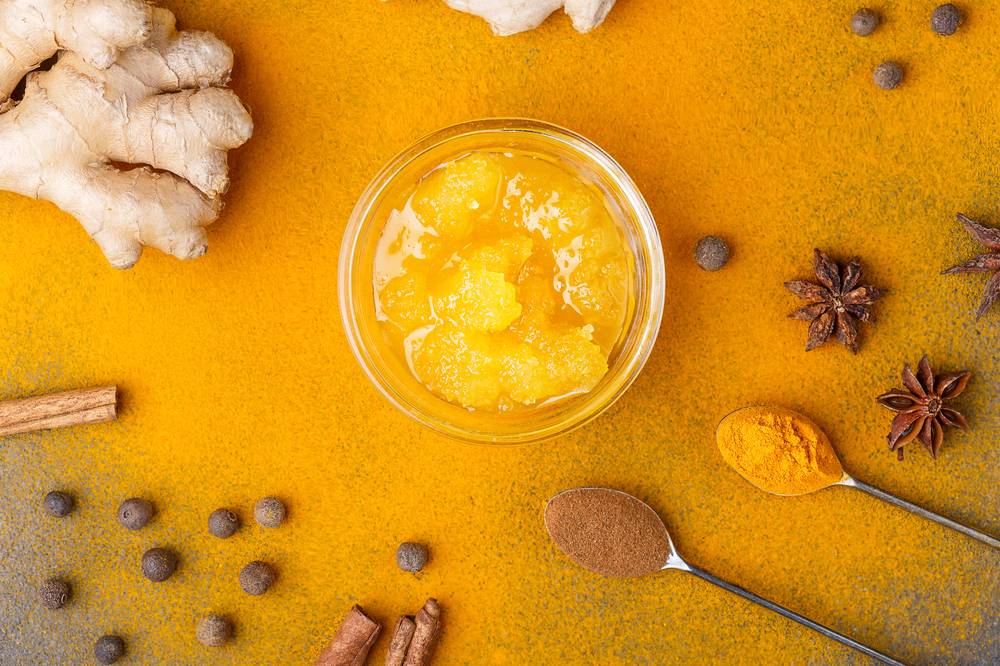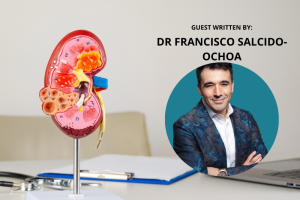Discover the Rise of Ginger and Turmeric: Beyond a Culinary Delight
The global fascination with ginger and turmeric isn’t merely about their flavours. Their reputed health benefits have put them in the limelight, especially in wellness circles.
The Historical Roots of Ginger and Turmeric
Both ginger (Zingiber officinale) and turmeric (Curcuma longa) have deep-rooted histories, with documented use in ancient medicinal practices spanning over five millennia. These rhizomes are believed to have originated in Southeast Asia, with their medicinal and culinary importance propagating throughout the world over time.
Ginger, often cited in ancient Ayurvedic texts, has been recognised for its anti-inflammatory, antioxidant, and digestive properties. By the time of the Han Dynasty in China and the later Roman Empire, ginger had become a staple in traditional medicine, thanks to the extensive trade routes like the Silk Road.
Turmeric, on the other hand, has been an integral part of Indian culture and Ayurveda. Its vibrant yellow colour has not only been used in cooking but also as a traditional dye and cosmetic. Medicinally, turmeric has been associated with a range of health benefits, including anti-inflammatory and antioxidant effects, and has been utilised in treating various ailments from respiratory issues to digestive disturbances.
The global spread of these spices can be attributed to ancient trade routes, which facilitated the exchange of knowledge, culture, and medicinal practices. Today, scientific research continues to delve into the myriad of health benefits associated with these age-old spices, reaffirming their significance in both traditional and modern medicine.
Health Benefits of Ginger and Turmeric, Backed by Science
Modern scientific investigations have begun to validate the traditional beliefs about the health benefits of ginger and turmeric.
The primary active compound in turmeric, curcumin, has been a subject of extensive research. In a meta-analysis involving 10 randomised controlled trials, curcumin was found to significantly reduce levels of inflammatory markers in the body. Furthermore, a systematic review of 29 studies with over 3,000 participants confirmed the antioxidant properties of curcumin, revealing its potential in mitigating oxidative stress, a precursor to many chronic diseases.
Similarly, ginger’s primary bioactive compound, gingerol, has received scientific attention. A study involving 60 participants found that a daily intake of 2g of ginger could reduce exercise-induced muscle pain by up to 25%. Additionally, another trial involving 41 participants with type 2 diabetes demonstrated that 2g of ginger powder per day reduced fasting blood sugar by 12%.
Ginger and Turmeric in Modern Wellness
With increasing scientific validation, both ginger and turmeric have gradually secured their positions in contemporary wellness practices. Notably, drinks infused with turmeric, such as the increasingly popular “Golden Milk” latte, are gaining momentum among health aficionados.
Building on this trend, a survey conducted in 2020 revealed that a significant 40% of respondents had ventured into trying beverages where turmeric stands out as a primary ingredient, primarily driven by its perceived health benefits. Transitioning from beverages to beauty, the spotlight has now shifted to ginger’s potential.
In the sprawling beauty industry, there’s been a marked surge in the popularity of ginger-based skincare products. Delving deeper, a comprehensive study on the global skincare market highlighted ginger as a standout, ranking it among the top five botanical ingredients frequently incorporated into formulations. Echoing its prominence, a vast majority of users have voiced positive feedback, particularly highlighting enhanced skin radiance and a notable reduction in signs of ageing.
Incorporating Ginger and Turmeric into Your Diet
Both ginger and turmeric can be seamlessly integrated into daily meals, offering not just flavour but also numerous health benefits. Fresh, dried, or powdered, these spices have versatile applications:
Teas & Infusions
Steep fresh ginger or turmeric slices in hot water to create a soothing tea.
Cooking
Add powdered or freshly grated ginger and turmeric to soups, curries, and stir-fries for an aromatic flavour boost.
Smoothies
Blend a pinch of turmeric or a small piece of ginger into your morning smoothie for added health benefits.
Capsules & Supplements
For those who prefer a more concentrated dose, ginger, and turmeric supplements are available at health food stores.
DIY Ginger and Turmeric Remedies: Affordable and Authentic
Commercial brands often overprice ginger and turmeric products. However, with some effort, you can make your own concoctions at home, ensuring both authenticity and cost savings.
Ginger-Turmeric Paste
Blend equal parts fresh ginger and turmeric with a splash of water. Store in a jar and use as a base for curries or beverages.
Homemade Capsules
Purchase empty capsules and fill them with high-quality ginger or turmeric powder for a personalised supplement.
Ginger-Turmeric Oil
Infuse carrier oils like coconut or olive oil with ginger and turmeric. This oil can be used for massages or added to dishes for flavour.
Face Masks
Mix turmeric powder with yogurt or honey for a natural skin brightening mask. Similarly, ginger juice can be applied to the skin for its rejuvenating properties.
Embracing the Timeless Wisdom of Ginger and Turmeric
In today’s fast-paced world, where quick fixes and artificial remedies frequently take the limelight, it’s both heartening and comforting to pivot towards nature’s abundant treasures for our health and wellness needs. Ginger and turmeric, boasting both time-honoured legacies and modern scientific endorsements, epitomise the powerful gifts nature bestows upon us.
Incorporating these spices into our diets and daily rituals, we not only pay tribute to bygone traditions but also arm ourselves with natural allies to tackle contemporary health concerns. Whether we’re indulging in a comforting cup of homemade turmeric latte or pampering our skin with a ginger-infused face mask, these roots serve as a constant reminder of the unwavering efficacy of natural remedies. Seamlessly bridging the past and present, they reaffirm the timeless wisdom: often, the most effective solutions are the uncomplicated ones, passed down through the ages and refined by the passage of time.
References:
- Tapsell, L. C., Hemphill, I., Cobiac, L., Patch, C. S., Sullivan, D., Fenech, M., Roodenrys, S., Keogh, J., Clifton, P., Williams, P., Fazio, V. A., & Inge, K. E. (2006, August 1). Health benefits of herbs and spices: the past, the present, the future. The Medical Journal of Australia; Wiley. https://doi.org/10.5694/j.1326-5377.2006.tb00548.x
- Turmeric, the Golden Spice: From Traditional Medicine to Modern Medicine. (2011). PubMed. https://pubmed.ncbi.nlm.nih.gov/22593922/
- Gupta, S. C., Patchva, S., & Aggarwal, B. B. (2012, November 10). Therapeutic Roles of Curcumin: Lessons Learned from Clinical Trials. Aaps Journal; Springer Science+Business Media. https://doi.org/10.1208/s12248-012-9432-8
- Ali, B. H., Blunden, G., Tanira, M. O. M., & Nemmar, A. (2008, February 1). Some phytochemical, pharmacological and toxicological properties of ginger (Zingiber officinale Roscoe): A review of recent research. Food and Chemical Toxicology; Elsevier BV. https://doi.org/10.1016/j.fct.2007.09.085
- Daily, J. W., Yang, M., & Park, S. (2016, August 1). Efficacy of Turmeric Extracts and Curcumin for Alleviating the Symptoms of Joint Arthritis: A Systematic Review and Meta-Analysis of Randomized Clinical Trials. Journal of Medicinal Food; Mary Ann Liebert, Inc. https://doi.org/10.1089/jmf.2016.3705
- Menon, V. P., & Sudheer, A. R. (2007, August 6). ANTIOXIDANT AND ANTI-INFLAMMATORY PROPERTIES OF CURCUMIN. Springer eBooks. https://doi.org/10.1007/978-0-387-46401-5_3
- Black, C. D., Herring, M. P., Hurley, D. J., & O’Connor, P. J. (2010, September 1). Ginger (Zingiber officinale) Reduces Muscle Pain Caused by Eccentric Exercise. The Journal of Pain; Elsevier BV. https://doi.org/10.1016/j.jpain.2009.12.013
- Arablou, T., Aryaeian, N., Valizadeh, M., Sharifi, F., Hosseini, A. F., & Djalali, M. (2014, February 4). The effect of ginger consumption on glycemic status, lipid profile and some inflammatory markers in patients with type 2 diabetes mellitus. International Journal of Food Sciences and Nutrition; Informa. https://doi.org/10.3109/09637486.2014.880671
- Vaughn, A. R., Branum, A. M., & Sivamani, R. K. (2016, May 23). Effects of Turmeric (Curcuma longa) on Skin Health: A Systematic Review of the Clinical Evidence. Phytotherapy Research; Wiley. https://doi.org/10.1002/ptr.5640












